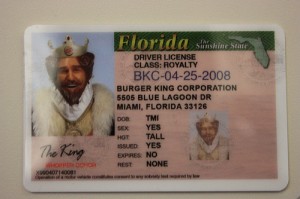| By Paul Rincon
Science Reporter, BBC News |


Sabre-tooths roamed an ancient landscape now subsumed by the North Sea
The partial leg bone of a sabre-toothed cat has been dredged from the seabed by a trawler in the North Sea.
The rare fossil, which is between one and two million years old and was found near the UK coast, is from a type of sabre-tooth called a scimitar cat.
According to palaeontologist Dick Mol, it belonged to an animal that was as heavy as a small horse.
It is the furthest north this species has ever been found, and the first time remains have come from the North Sea.
The dry steppe landscape, criss-crossed by rivers, where animals such as the scimitar cat once roamed was flooded at the end of the last Ice Age.
The fossil remains of more common extinct beasts such as the mammoth are routinely recovered from the sea by trawlers.
Beam trawlers use special gear to touch the sea bed, capturing flatfish lying in the sand. But this also stirs up shallow, buried fossil remains which can end up in the nets.
In the Netherlands, trawlermen are paid up to 100 euros for such discoveries.
Mr Mol, who is based at the Natural History Museum in Rotterdam, said the partial humerus belonged to a "huge" (probably male) cat that weighed about 400kg (881lbs).

Two views of the fossil, netted by a trawler in the North Sea
The fossil, which was encrusted with tiny, coral-like sea creatures called bryozoans, was brought ashore by the owner of the Dutch trawler TX 1.
He then handed it to a collector, who passed it on to Mr Mol for identification.
It had been netted in the southern bend of the North Sea, an area known to yield fossils from every period of the Pleistocene. This epoch lasted either from 2.6 or 1.8 million years ago (depending on which expert you ask) until 10,000 years ago.
Warm spell
Dick Mol said the weight of the bone was an immediate indication that much of its organic matter had been converted to minerals.
 The remains of Ice Age animals are routinely netted by Dutch trawlers |
The heavy mineralisation suggested it dated to the early part of the Pleistocene.
Other Early Pleistocene animals recovered from this part of the North Sea include elephant-like mastodon, southern mammoth, hippopotamus, horses, bears and giant deer.
Mr Mol and his colleague Wilrie van Logchem compared the big cat with specimens from the site of Untermassfeld in Germany, where a very similar complement of Early Pleistocene animals has been found.
They identified the find as a fragment of front leg from the scimitar cat Homotherium crenatidens.
The Rotterdam-based researcher said the sabre-tooth could have inhabited this part of North-West Europe during a warm spell between glaciations.
Top predator
"The fauna we are dealing with - the southern mammoth, the hippo, the giant deer and this sabre-toothed cat - were adapted to a savannah-like environment," Mr Mol told BBC News.
"[The cat] was probably living in the forest that bordered on the river banks."
He added: "It was like the Serengeti, but in our back garden."
 The researchers compared the fossil with others from the Early Pleistocene |
Analysis of the North Sea fossil suggested it was probably bigger than other
H. crenatidens specimens known from Untermassfeld and from the Massif Central in southern France.
Mr Mol explained: "If we look at the bone, we can see that it was a huge animal - probably a male individual."
"We have to understand that sabre-toothed cats are specialised hunters at the top of the food chain. So they are already very rare."
The remains of only one other sabre-toothed cat - a much younger species called Homotherium latidens - have previously been recovered from the North Sea.
Scientists think the huge canines that characterise these cats were remarkably fragile. So the animals probably sank their "sabre-teeth" into the fleshy necks of their prey, avoiding bones that might crack these delicate mouth ornaments.
The big cats would then wait for the unlucky animal to die from blood loss.
Paul.Rincon-INTERNET@bbc.co.uk














 Steven Musil is the night news editor at CNET News. Before joining CNET News in 2000, Steven spent 10 years at various Bay Area newspapers.
Steven Musil is the night news editor at CNET News. Before joining CNET News in 2000, Steven spent 10 years at various Bay Area newspapers.  Honda surprised the motoring world today with the release of the radical and futuristic Honda FC Sport, a three-seat Hydrogen-powered design study that hints at the future of Honda sports cars to come. Using the Honda V Flow fuel cell setup already found in the
Honda surprised the motoring world today with the release of the radical and futuristic Honda FC Sport, a three-seat Hydrogen-powered design study that hints at the future of Honda sports cars to come. Using the Honda V Flow fuel cell setup already found in the 

























